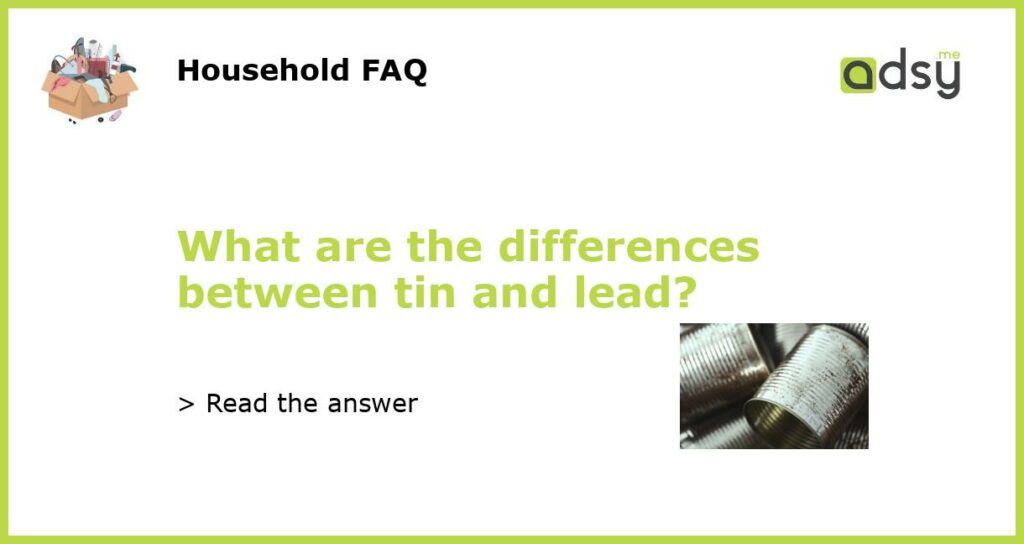Tin vs. Lead: Exploring the Key Differences
When it comes to metals, few elements are as well-known as tin and lead. From their historical significance to their wide range of applications, both metals have played integral roles in human society. However, despite their similarities, tin and lead also have some distinctive characteristics that set them apart. In this article, we will explore the key differences between tin and lead, from their physical properties to their common uses.
Physical Properties
Tin and lead have different physical properties, which contribute to their unique characteristics. Tin, known by the chemical symbol Sn, is a silvery-white metal that has a relatively low melting point of 231.93 degrees Celsius (449.47 degrees Fahrenheit). In contrast, lead, represented by the symbol Pb, is a heavy, bluish-grey metal with a melting point of 327.5 degrees Celsius (621.5 degrees Fahrenheit). This significant difference in melting points becomes vital when considering their various applications.
Toxicity
One of the most important distinctions between tin and lead lies in their toxicity levels. While tin is generally considered non-toxic, lead is known to be highly toxic to both humans and the environment. Lead exposure can lead to various health problems, including neurological issues, developmental delays, and even organ damage. In contrast, tin is not associated with such health risks and is often used as a safer alternative in various industries.
Applications
The differing attributes of tin and lead contribute to their wide range of applications in various industries. Tin is commonly used in the manufacturing of electronics, such as circuit boards and soldering materials. It is also utilized for coating other metals to prevent corrosion, a process known as tin plating. Lead, on the other hand, has historically been used in ammunition, soldering materials, and batteries. Due to its toxicity, lead usage has been significantly reduced in recent years, with many industries transitioning to safer alternatives.
Historical Significance
Both tin and lead have played major roles throughout history. Tin, in particular, has a rich historical significance, dating back to ancient civilizations such as the Bronze Age. Tin was used in the production of bronze, an alloy of tin and copper that revolutionized weaponry and tools. Lead, on the other hand, has a long history of use in plumbing, due to its malleability and corrosion resistance. However, the harmful effects of lead have led to a decline in its usage, particularly in water supply systems.
Environmental Impact
The environmental impact of tin and lead also sets them apart. While tin is relatively environmentally friendly, lead can pose significant risks. Lead pollution can contaminate soil, water, and air, leading to detrimental effects on ecosystems and human health. Efforts are being made worldwide to reduce lead usage and ensure proper disposal of lead-containing products.






